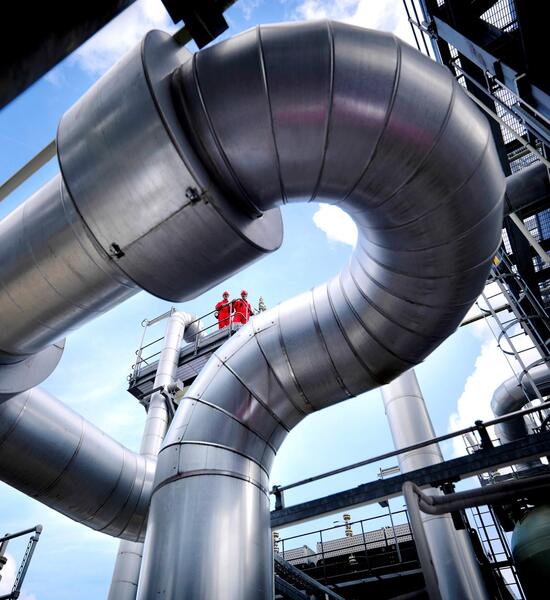Education
Skip to content
Welcome to the BlackRock site for intermediaries
Before you proceed, please take a moment to review and accept the following Terms and Conditions.
The information contained on this website is intended strictly for Sophisticated Clients as defined under the Capital Market Authority rules and regulations.
The information contained on this website is being made available on the basis that the recipient acknowledges and understands:
- any product/service related literature contained on this website is not subject to any form of regulation or approval by the CMA or any other relevant licensing authority or governmental agency in the Kingdom of Saudi Arabia;
- the information contained on this website does not constitute or form any offer or recommendation to issue or sell, or any solicitation of any offer to subscribe for or purchase, any securities, investment products and/or services in the Kingdom of Saudi Arabia and accordingly should not be construed as such;
- the information contained on this website is for information purposes only and is not intended for and should not be distributed to, or relied upon by, members of the public;
- the information contained on this website may contain statements that are not purely historical in nature but are ‘forward looking statements, including amongst other things, projections forecasts or estimates of income. These forward-looking statements are based on certain assumption, some of which are described in other documents or materials.
This website and the information it contains is not directed at residents of any country where it is prohibited by law or regulations from making the information available. It is not intended for access or any use that would be contrary to local law or regulation.
The CMA has no responsibility for reviewing or verifying any Prospectus or other documents contained on this website.
Whilst great care has been taken to ensure that the information contained on this website is accurate, no responsibility can be accepted for any errors, mistakes or omissions or for any action taken in reliance thereon.
You may only reproduce, circulate and use any information contained on this website with the express consent of BlackRock Saudi Arabia.
BlackRock Saudi Arabia is authorised and regulated by the Capital Market Authority, license no. 18-192-30.
BlackRock Saudi Arabia is located at Laysen Valley, Building 7976 Salim Ibn Abi Bakr Shaikan St West Umm Al Hamam District, 2223, Riyadh 12329, Saudi Arabia.
I CONFIRM THAT I AM A SOPHISTICATED INVESTOR, HAVE READ THE IMPORTANT INFORMATION AND WISH TO PROCEED

The New Infrastructure Blueprint
Societies everywhere are grappling with major, overlapping challenges: Energy security pressures, the transition to a low-carbon economy, changing demographics and urbanization, and realigning supply chains. On the horizon is a digital revolution led by artificial intelligence.
A global opportunity
Taken together, these forces require an enormous amount of new infrastructure, from super batteries and hyperscale data centers to modern logistics hubs and upgraded airports.
We explore the major structural forces driving what’s poised to be a transformational moment in infrastructure investing. And we dive into the various ways capital can invest in the opportunities that we’re seeing today as well as the ones we’re expecting, and how investors can incorporate the asset class into their portfolios.
A changing world
Infrastructure sits at the intersection of the trends transforming the world we live in. It’s the cell towers and fiber internet that power the digitization of business and everyday life. It’s the new land, air and sea transportation facilities that support global supply chains as they reconfigure.
More broadly, it’s the new and upgraded infrastructure across transportation, energy, communication and other services required by a growing and urbanizing world population.
Increase41%
in foreign direct spending that Mexico saw in the first half of 2023
Many companies are seeking to reduce their dependencies on distant producers, shortening supply chains to bring them closer to their end consumers. Mexico is one of the nations that has benefited from this nearshoring trend.
Increase53%
in spending on data center construction is projected from 2022 to 2030
Rapidly advancing technology will require more infrastructure, including new sources of energy.
Increase70%
the percentage of the population is expected to live in urban areas by 2050 vs. just over half today
Urban expansion means enhanced infrastructure across multiple sectors. Among other things, cities require more electricity, expanded telecommunications networks and essential water and sanitation systems.
Source: Ministry of Economy, Mexico, August 9, 2023.
Source: McKinsey analysis, January 2023, citing Synergy Research Group.
Source: World Bank, “Urban Development Overview,” April 3, 2023.

A new era for energy
An increasingly digital and urban population requires more electricity, while nations work to lower carbon emissions and strengthen their energy security.
The financing gap

Governments have traditionally built and maintained infrastructure, but with national debt tripling since the 1970s, it’s unlikely they can fund it alone. The situation requires a strategic pivot. And private investors are meeting this need, led by large pensions and sovereign wealth funds who are attracted by the stability, long duration and inflation-protected potential returns of infrastructure assets.
At the same time, for companies around the world infrastructure is just one of many demands on their resources – and is often not their core business consideration. A private investor can work with corporates, allowing firms to focus on their strategic priorities.
What it means for investors
The infrastructure moment is a rising opportunity for investors. It encompasses a wide range of investment options and sectors, and it can play a variety of roles within a portfolio.

A wide array of opportunities
Private investors have the chance to be at the center of a transformative period for essential infrastructure. The opportunities range from partnering with governments to build physical assets to joint ventures with infrastructure operators, as well as bespoke debt structures.

Diversification in a portfolio
Infrastructure has historically had a relatively low correlation to traditional asset classes due to its idiosyncratic characteristics – it typically doesn’t move in step with economic cycles and its service contracts are often inflation-linked.

Stable investment
As an asset class, infrastructure has traditionally been known for its stability. Many projects involve essential services that remain in demand regardless of economic conditions, and which generate steady, regular and predictable cash flows.
Past performance is not a reliable indicator of current or future results and should not be the sole factor of consideration when selecting a product or strategy.








